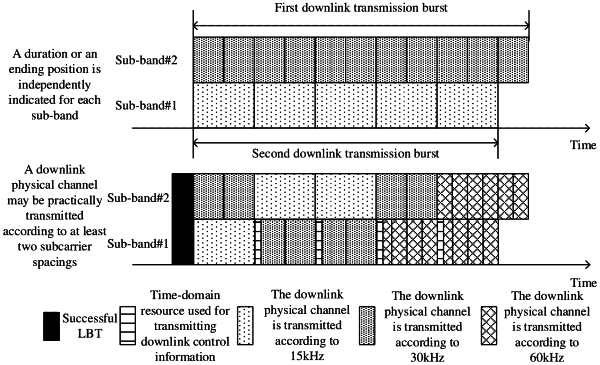| CPC H04W 72/0446 (2013.01) [H04W 16/14 (2013.01); H04W 72/1268 (2013.01); H04W 72/23 (2023.01)] | 19 Claims |

|
1. A method for information transmission, comprising:
determining, by a network device, a first time-domain resource available on a first carrier, wherein the first carrier is an unlicensed carrier and the first time-domain resource is in a first downlink transmission burst; and
sending, by the network device, first information to a terminal device through the first time-domain resource on the first carrier, wherein the first information is used to indicate time-domain resource information of a first transmission burst according to a first subcarrier spacing;
wherein the time-domain resource information comprises at least one of:
an end of the first transmission burst; a channel occupancy duration; or a slot format of a transmission burst;
wherein the first information is further used to indicate time-domain resource information of a third transmission burst according to a second subcarrier spacing,
wherein the third transmission burst comprises at least one of:
a fourth downlink transmission burst on the first carrier;
a fourth uplink transmission burst on the first carrier;
a fifth downlink transmission burst on a second carrier; or,
a fifth uplink transmission burst on the second carrier, and
wherein a frequency-domain resource corresponding to the third transmission burst does not overlap with the frequency-domain resource corresponding to the first transmission burst.
|